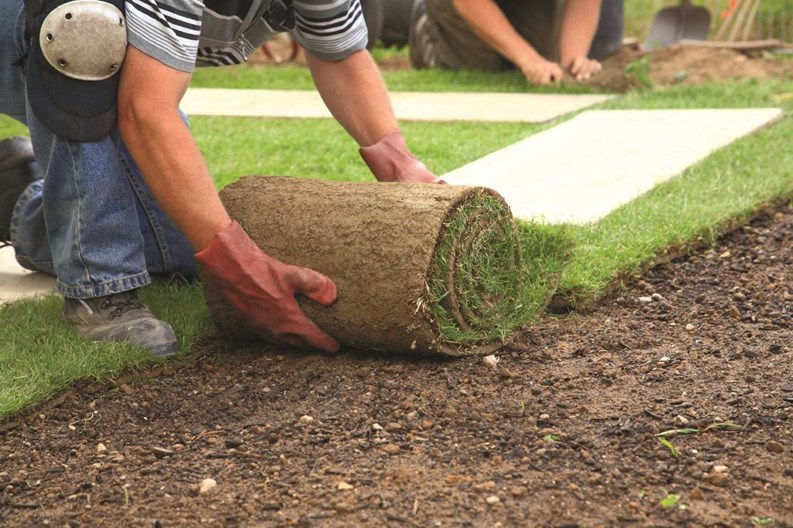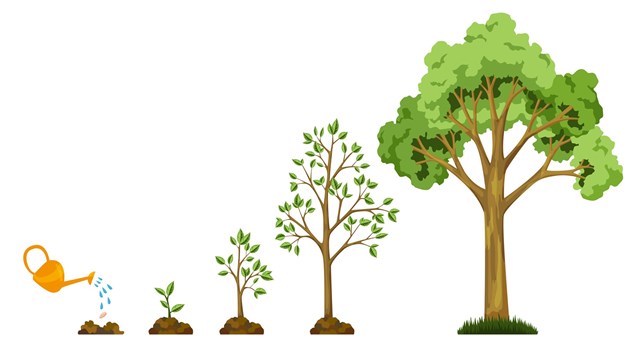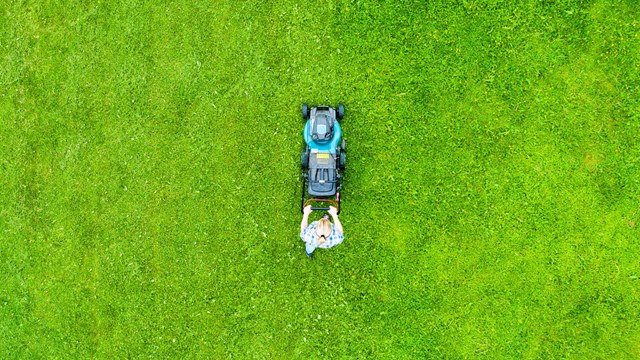When someone says 'landscaping,' the first thought that comes to mind probably isn't the front entrance of a Newark co-op or the curb of a Jersey City condo building, but greenery and other design elements definitely add to a building's 'curb appeal’—and in a down economy, attracting buyers and increasing value for residents is a priority for any condo community.
Environentally Sound
The benefits of having greenery outside a co-op or condo building are manifold. First, there’s the environmental aspect. New Jersey is not to be confused with the Amazon rain forest. Although there is a significant amount of parkland, there’s also a ton of asphalt and concrete—not to mention air pollution, noise pollution, water pollution, and so on. The presence of a few nice leafy plants in front of an association’s condo complex may not seem like much, but they do make a difference.
Green landscaping “fights pollution. It provides oxygen,” says Bill Vecchione, owner of B&G Outdoor Rooms/Landscapes in Scotch Plains, New Jersey. “It cleanses the environment in any kind of urban area. It cleanses the sulfur and other pollutants. Trees eliminate noise, and they can screen off unsightly areas.”
There are numerous pluses to energy efficient landscaping such as planting trees for the purpose of providing shade which reduces cooling costs or building wind breaks to slow wind flows near buildings, which prevents heat loss.
Ken Smith, a New York-based landscape architect, agrees. “It reduces the heat index on a building, and therefore reduces the A/C load,” he says. “And it’s a habitat for birds.”
Then there are the aesthetic reasons. “It helps with a sense of entrance, which makes everyone feel good, and increases property value,” says Smith.
Not sold on the “but it looks better” argument? How about if the nice visuals had other benefits as well?
Aesthetics, Too
“Landscaping adds value to a property. It deters crime,” says Vecchione. “When landscaping is done right, people don’t tend to destroy the property with graffiti. They stay away from places that are well-maintained because they believe they are protected by the police.”
“There’s been studies that landscaping will add to the value of your home,” says Hampton, New Jersey-based landscape designer Susan Schlenger and author of the book Designing with Evergreen Shrubs. “Particularly hardscaping, like if you put in a new walkway or patio. It also gives you a nice place to enjoy your property. You can create usable space and I bet you’ll enjoy being outside more.”
What should a board do if a building wants to (literally) spruce up its entrance? The first step is resisting the urge to do it on the cheap and bring in an expert.
“If you want a professional look—that’s what you’re going to get if you hire a professional,” says Schlenger. “People can do it themselves if they do some research and have some knowledge and are capable and if they are do-it-yourselfers. But landscape designers know how to deal with all aspects of the land so everything works really well together. For example, a professional landscape designer can also be skilled in lighting design. The use of up lighting and down lighting on trees and accent lighting on special features can create a very enchanting vista. It should however be used in moderation to create a subtle atmosphere.”
“The first thing I’ll do with a new client is formulate a design plan,” says Vecchione. “A typical design plan will run about $1,000 to $1,200 for a quarter-acre project and will include all construction backup details. Clients are taken on a plant nursery tour to help determine the selection for the plant list and then I’ll take the time to create custom color visuals of the design plan and foam board illustrations that I’ll present before any work begins.
“The second thing,” he adds, “is the demolition to remove existing decks, sod, plant material, stone, and rocky soil. Then we’ll regrade the site, according to the new design, which could include cut and fill, assign soil, wall systems, maybe natural boulder sets, or concrete block with brick or stone veneer, which we use to help save people maybe $30,000 to $40,000 to put into the rest of the project.”
Buy Right
But it’s also a matter of buying the proper plants—plants and trees that will survive and thrive in the New Jersey’s changeable climate. “You need to put the right plant in the right place,” says Schlenger. “For a New Jersey winter, you want evergreen shrubs. Those are the shrubs that don’t lose their leaves in the wintertime.”
The Garden State with tree-forested landscape can actually create too much shade which could be brutal to certain plant life. The New Jersey Department of Environmental Protection (NJDEP) website has a list of recommended trees and plants, which have a history of thriving in New Jersey.
Schlenger says it optimal to have a mix of annuals and perennials, including evergreens. “Boxwood, azaleas, rhododendrons, hollies all have a history of thriving in New Jersey. For trees you have crabtree, magnolias, dogwood and red maples.”
There’s also a matter of spacing. A good rule of thumb is—the planting should be done to look good a year or two down the line—not the day after it’s planted. Gardens need time to grow.
Feed the Soil
“You need sufficient soil,” says Smith. “And the soil beneath the sidewalk is, in all likelihood, not ideal for growth.”
And professionals can utilize their design to serve a larger purpose. You know when you go to Lowe’s or Home Depot, and you want to race the cart through the parking lot back to your car, but you can’t go that fast because there are potted planters in the way, and cobblestones out front? That’s designed to slow you down. Landscape architects can do the same thing with your building—create a meandering path in a garden, or alter the texture of the material out front, to slow foot traffic.
“In landscape architecture,” Vecchione says, “there’s a reason for everything.”
Just as there are many benefits to having greenery at the entrance to a co-op or condo building, there are many factors working against that greenery.
“The shade factor is huge,” he says. Without a sunny exterior, plants tend not to do well and get cold in concrete planters.
And man’s best friend is plant’s worst enemy. “Dogs pee all over the plants. The urine is caustic, it’s high in nitrogen—it kills the plants. Dogs are a very real problem for plants in New Jersey.”
Then there’s the fact that even if in the best case scenario, many plants and trees simply cannot live in a city, no matter what. They key, then, is to plant what will have a chance to live—and then make sure the plants are well cared for. This means cleaning the planters, watering the plants, spreading mulch or peat moss in the spring, or whatever else the particular plant might require. Boards sometimes operate under the assumption that planting the garden is a one-time cost; while the start-up costs represent the bulk of the total price tag, it’s important to keep some money in the budget for maintenance.
“There is no no-maintenance landscaping,” Smith says. “A board needs to understand that they have to clean the planters to have healthy plants.”
The old saw about an ounce of prevention being worth a pound of cure applies here. Landscape architects are long-range planners. They see a project as something that has an extremely long life span.
“It’s extremely expensive to do it the right way,” says Vecchione. “But if it’s done right, it’s good for a hundred years. Like Olmstead in Central Park. If you’re going to spend that kind of money, you have to make sure it’s there for years and years.”
Greg Olear is a freelance writer and a frequent contributor to The New Jersey Cooperator. Staff Writer Christy Smith-Sloman contributed to this article.







Leave a Comment